Are you planning your Lucknow visit anytime soon? You can’t miss the iconic Bara Imambara in Lucknow.
Bara Imambara is a Nawabi-era architecture in Lucknow. It is known for its unique architecture and labyrinth and for having the world’s largest arch hall standing without any support of beams.
In this post, you’ll learn more about this building, the visiting times, ticket prices, parking availability, and more.
Being a local, I have visited this magnificent architecture many times, but I never saw the mystery and heritage it held until recently.
Read on.
Here’s what you’ll know in this blog post:
How To Reach Bara Imambara in Lucknow
You can reach Bara Imambara in Lucknow by taking any cab service like Uber or Ola from your location. Alternatively, you can book a tuk-tuk for the same.
However, if you wish to go by public transport, first reach Hazratganj by Lucknow Metro or a tuk-tuk. You can get another tuk-tuk or e-rickshaw from here to reach the Bara Imambara complex.
If you have your own vehicle, please use Google Maps — it’s reliable here.
Virtual Tour of Bara Imambara in Lucknow
The first thing you might ask, if you travel in your own vehicle, is about the parking availability.
Is there any parking available near Bara Imambara?
Yes, a dedicated parking facility for two-wheelers and four-wheelers is available near Bara Imambara, operated by the same trust that operates the monument.
If you’re traveling with a travel agency, you don’t need to worry about such things.
When you come to the first gate of the Bara Imambara complex, you will see a building built in Mughal and Rajput architecture on the right side. This building is known as the Naubatkhana.
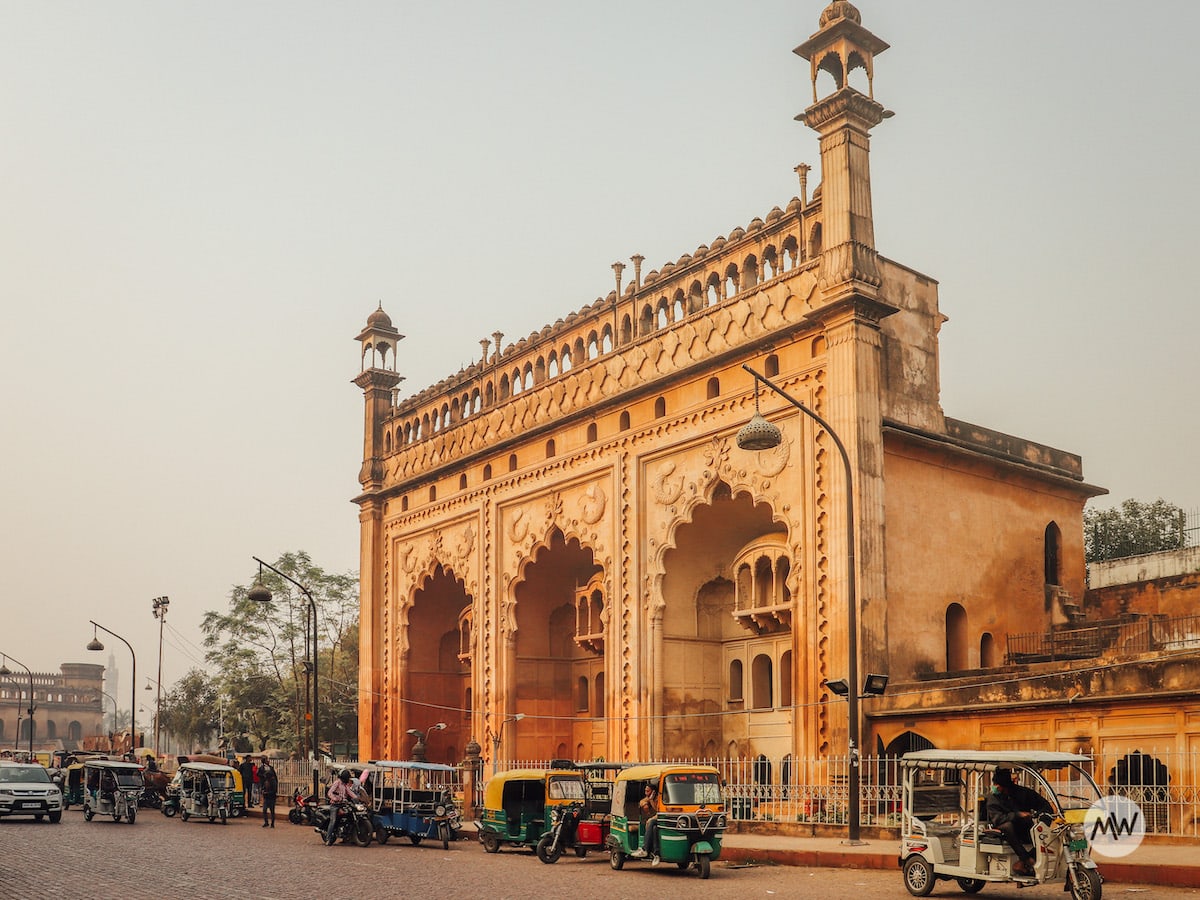
In those times, drummers used to play music when the Nawab Saheb or any special guest entered the Bara Imambara.
Further, there are three entrances to Bara Imambara, but only one is currently functional.
The umbrella-like architecture (chhatris) on the four corners of the entry gate’s upper part resembles the architecture found in Rajasthan. There are also four small windows made in Rajasthani style, giving you a charming look.
As you enter from the first gate, you see another grand entrance – beautiful enough to leave you in amazement.
This is the place where you’ve to get tickets:
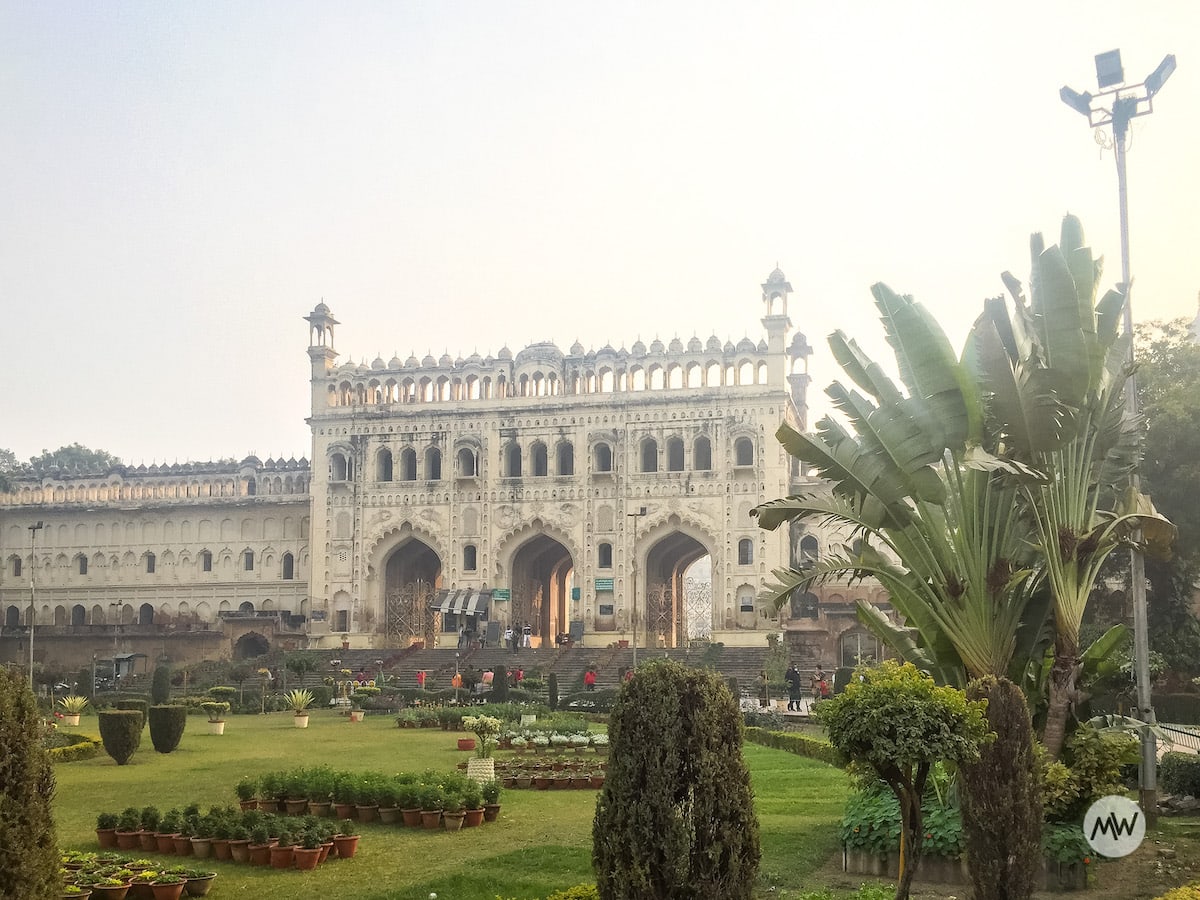
What are the ticket prices for Bara Imambara in Lucknow?
The ticket prices for Bara Imambara in Lucknow are INR 60 for Indians and INR 500 (approximately USD 6) for foreigners.
If you are visiting for the first time, you can take an official tour guide, but we’d rather say be an explorer, follow our guide, and you’re good to go!
The tour guide price for Bara Imambra is approximately INR 150.
Let’s go inside.
Aasifi Mosque
As you enter through the second entry gate, you’ll see several buildings – the main building of Bara Imambara and Bhul Bhulaiyya, the Aasifi Mosque on the right, and Shahi Baoli on the left.
People offer Namaz every Friday in the Aasifi mosque, so the Imambara is closed every Friday till noon.
Exploring Main Buildings: Bara Imambara & Bhul Bhulaiyya
The entire building houses Bara Imambara and Bhul Bhulaiyya, a three-story complex. Nawab Asaf-Ud-Daula used Bara Imambara as his court.
You have to climb a few steps to enter the complex.
Since Bara Imambara is a holy place, you must remove your shoes and submit them at the nearby counter before entering.
As you enter Bara Imambara, situated on the ground floor, you may experience forced selling from the tour guides.
These guides take you with groups of 6-10 people and might kill the kind of freedom you seek.
It depends on your will, whether you want a guide or not. Don’t believe anything they say to convert you into a sale.
As soon as you enter, you’ll see a tall throne of Nawab Asaf-Ud-Daula on the left. There are three halls inside the Imambara, the main hall and two other halls on either side.
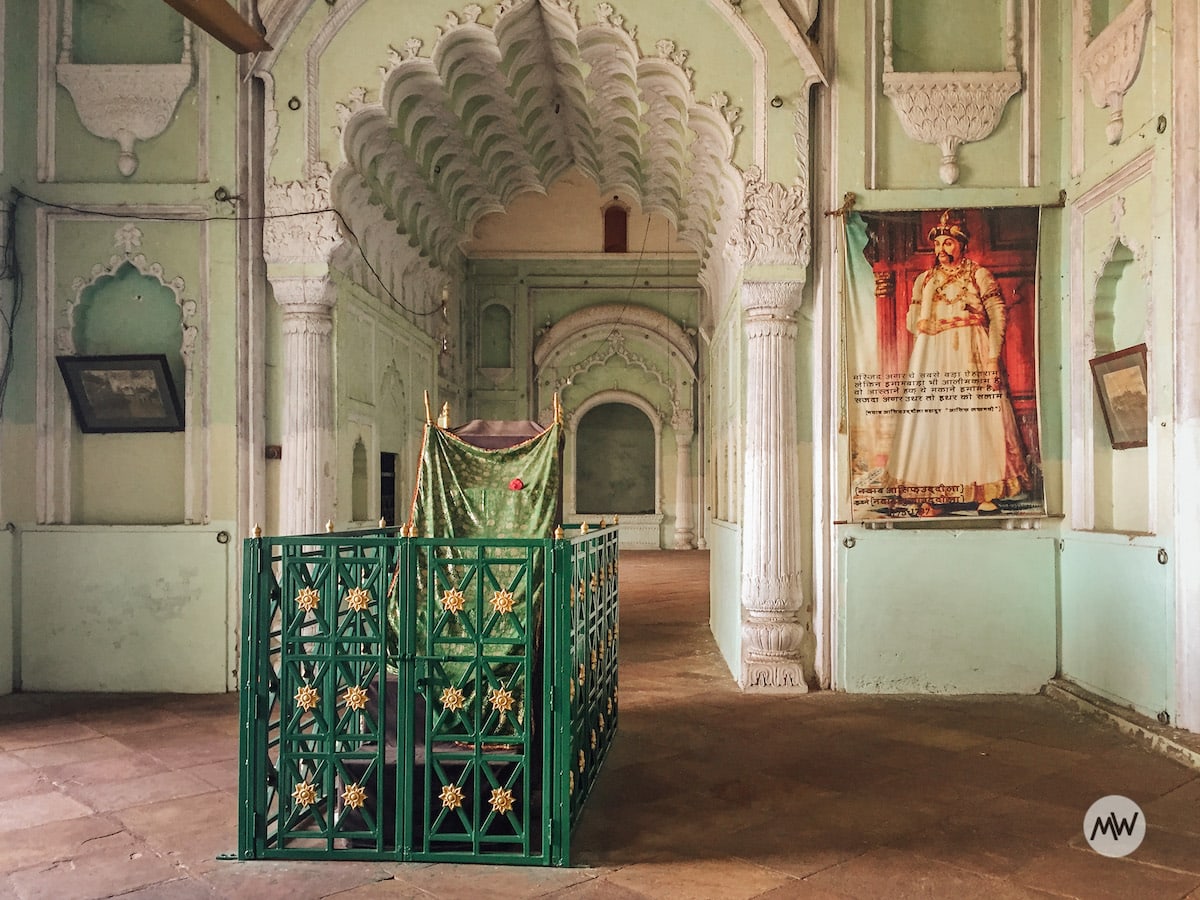
The main hall is called Parsi Hall, and the hall on the left is called the Chinese Hall.
The hall on the right is called Kharbooja (melon) Hall because its ceiling represents a Kharbooja (Hindi word for melon).
Legend has it that at the time of construction, an old lady used to sell melons at this exact place, so on her request, Nawab Asaf-Ud-Daula decided to build the ceiling shaped like a melon.
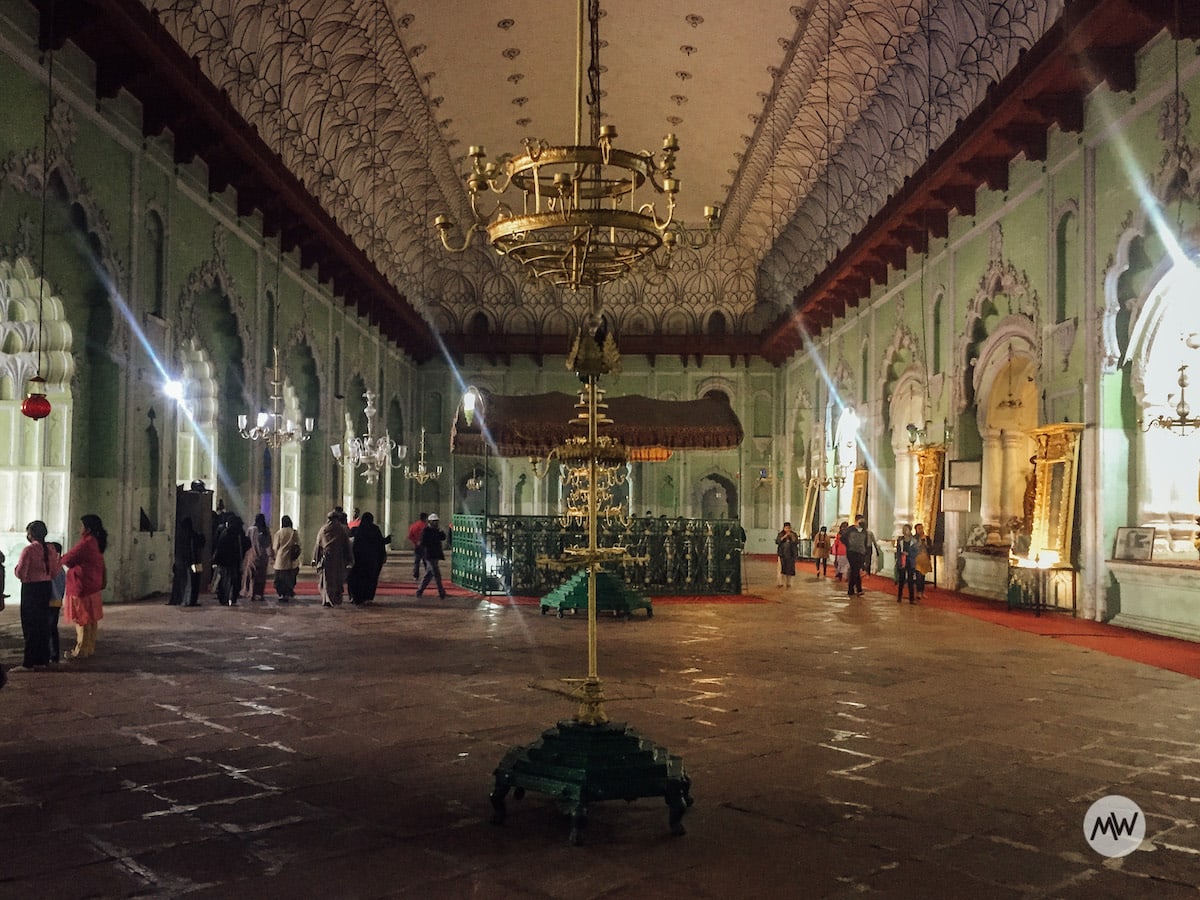
You can see some tazias in the Chinese Hall but not in the Kharbooja Hall.
The Parsi Hall looks like a tea tray and is 50 meters long and 14 meters wide. The ceiling of this hall was constructed without any beams and stands still without any pillars to this day. Materials used in making these walls included pulses, limestones, and Lakhori bricks.
All three halls are in a mix of light green and white.
You also see some glass lamps hanging from the ceiling and the protruding jharokhas in Rajput architecture enhancing the beauty.
There are two tombs in the center of the Parsi Hall, which belong to Kifayatullah, the complex architect, and the Nawab Asaf-Ud-Daula.
As you stroll inside the Bara Imambara, you see artifacts, tazias, paintings, mirrors, models of religious places, and some other keepsakes.
Bhul Bhulaiyya of Lucknow
The upper two floors of the building complex have a world of amazement popularly known as Bhul Bhulaiyya or Bhool Bhoolaiyya. It’s a labyrinth or maze built in the era of Nawabs with thousands of ways to go in but only a few to come back.
The labyrinth is a part and extension of the Bara Imambara. If you are going to the Bhul Bhulaiyya for the first time and want to hear associated legends, you should take a guide.
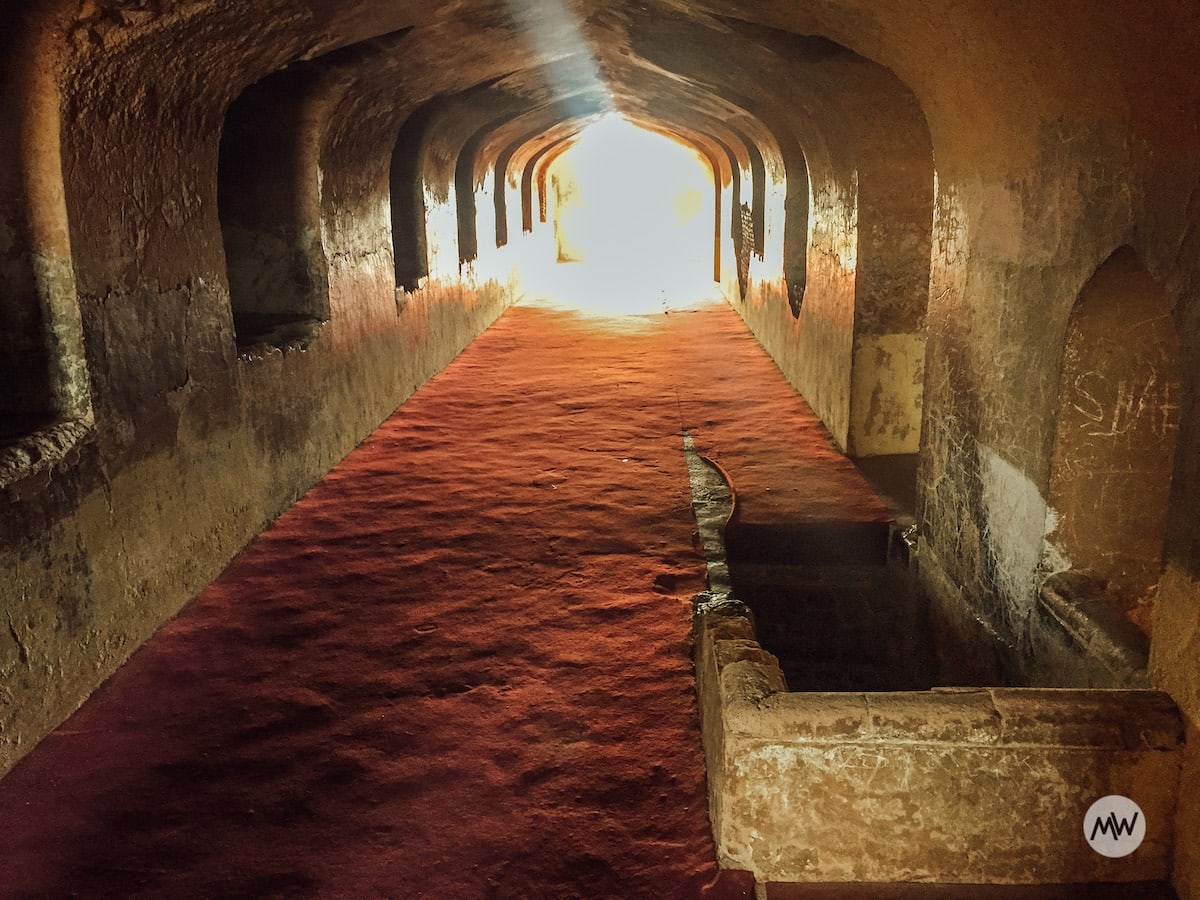
The most thrilling fact about Bhul Bhulaiyya is that it makes you forget your way out once you get in. There are narrow paths, identical doors, and spaces that feel like a prison.
When you reach the terrace of Bhul Bhulaiyya and Bara Imambara complex, fighting all the odds, you’ll see mesmerizing views of Lucknow city.
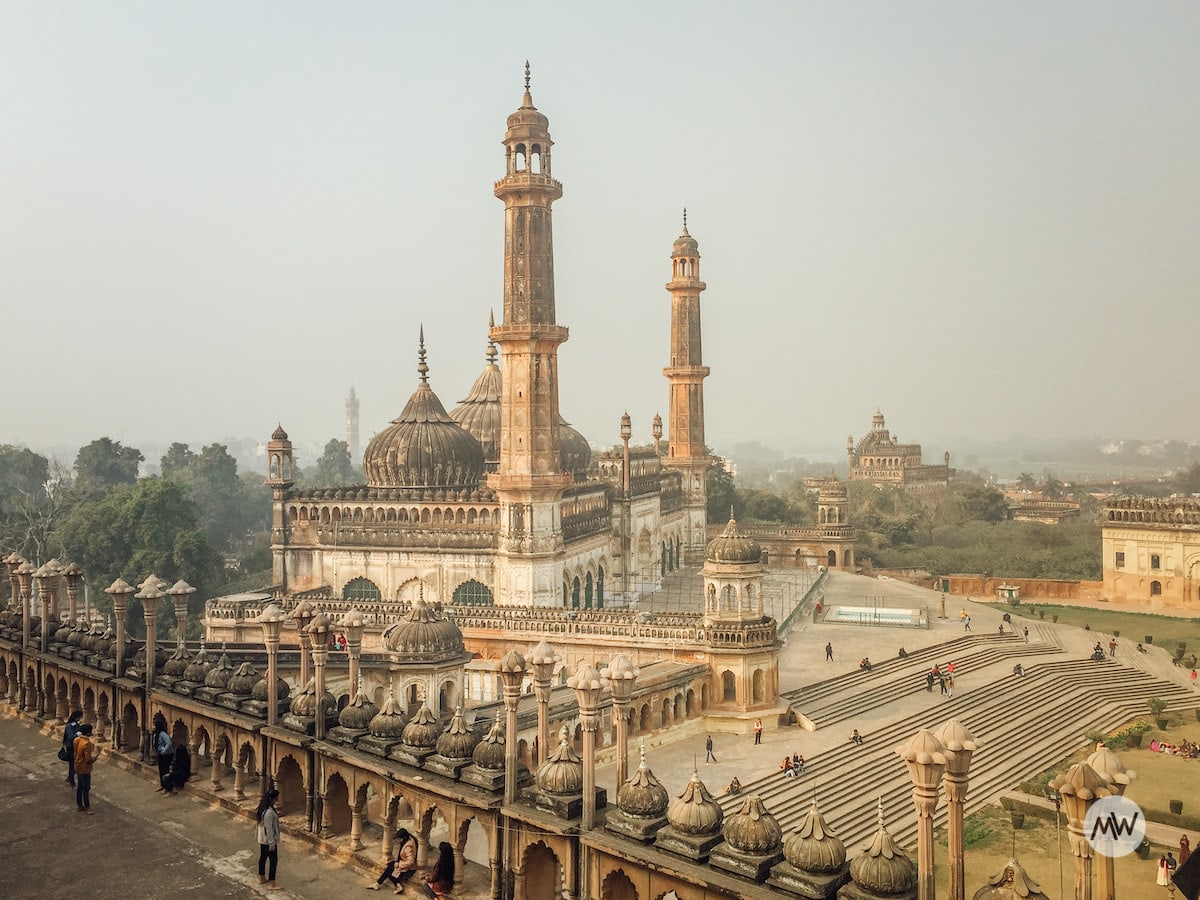
The front-facing windows allow you to overlook the entrance and the Rumi Gate, the Gomti River, and the Clock Tower.
The Story Behind The Bhul Bhulaiyya
One story I recall relates to a proverb: “Walls have ears too.”
Perhaps this is where it’d have been born, as it fits right in this context. How? It’s because some walls of Bhul Bhulaiyya are mysteriously hollow, and hence you can hear voices from meters long distance away if you stick your ears to the walls.
Bhul Bhulaiyya is also said to have several tunnels and claims that they lead to the Red Fort in Delhi, the Taj Mahal in Agra and Faizabad, and other parts of Uttar Pradesh.
In another story, some people say that Nawabs had hidden their treasures in these tunnels. Following the lead, the British government often tried to go inside these tunnels but failed every time. Soldiers who went into these tunnels never returned. After these horrific events, tunnels were closed as per the orders of the government.
I even overheard a tour guide say there used to be a swamp in those tunnels with crocodiles living in it, devouring those who passed by.
Shahi Baoli
Shahi Baoli was the first structure constructed in the Bara Imambara Lucknow complex.
Since it was connected to the Gomti River nearby, the intention was to get the water supplies needed to construct the Imambara. Once overflowing with river water, this stepwell has completely dried up.
Baoli is a stepwell whose primary function is to store water.
The Shahi Baoli’s architecture is so clever that it gave leverage to the soldiers sitting inside on a watch. They could easily watch who enters the complex, but the person couldn’t even get a hint of them. Perhaps this would have proved helpful for the Nawab’s security.

Inside the Baoli, you’ll see the stepwell and some rooms and halls built at that time to protect the people from the scorching heat. The temperature inside was lower than the temperature outside.
There’s a window which the tour guide refers to as a CCTV camera. From here, you can see clear and colorful pictures of people reflected on the water of the stepwell.
Why Was the Bara Imambara Complex Built?
Around 1784, the Awadh region faced a deadly and long famine. People were dying because of starvation, lack of money, work, and resources.
Asaf-Ud-Daula, the Nawab of that time, felt this deeply. He was hurt seeing the terrible condition of his empire and finally decided to start construction work to provide jobs to people and help them afford meals twice.
The noble construction turned out to be Bara Imambara, which you see today.
About 20,000 people got employment from the construction of Bara Imambara.
People became happy and popularized a slogan: Jisko Na De Maula, Usko De Asaf-Ud-Daula – meaning whoever isn’t blessed by God is blessed by Asaf-Ud-Daulah.
From an architect’s perspective, Bara Imambara became a mixture of Rajput and Mughal architecture and built Lakhori bricks. These bricks were famous in the Nawabi era and are used to construct most of Lucknow’s heritage buildings.
Bara Imambara Ticket Prices and Timings
| Indian Tourists | INR 40 |
| Indian Tourists (combined ticket) | INR 60 |
| Foreign Tourists (combined ticket) | INR 500 |
| Tour Guide | INR 150 |
| Opening Hours | Sunrise to sunset (~ 6 AM TO ~ 5 PM) |
| Opening Days | Bara Imambara opens all days of the week except Mondays and opens post-afternoon on Fridays. |
Note: Ticket prices and timings are subject to change per administration decisions.
Things to Know Before You Visit Bara Imambara
- Parking is available at the first entry gate, just alongside the road.
- You’ll find a counter on the right side after the first entrance gate to keep bags and other items safe.
- Photography is allowed, and you can obtain permission by paying an additional fee.
- If you want to visit the nearby Chota Imambara and Picture Gallery, you can take a combined ticket from the Bara Imambara.
- You must deposit your shoes at Imambara premises by paying some standard charges.
- It is advisable (not strictly necessary) to take a tour guide with you if it’s your first time. You can see the tour guide’s rate list near the ticket counter.
- There are restrooms and drinking water available inside the premises.
- There are also some shops where you can buy souvenirs after the first entrance gate.
Some Commonly Asked Questions
Why Bara Imambara was built?
Nawab Asaf-Ud-Daula started building the Bara Imambara complex to provide employment and financial aid to the people in the Awadh region during the famine of 1784.
Where is the Bhul Bhulaiyya located?
The world-famous Bhul Bhulaiyya is in the Bara Imambara in Lucknow, the capital of Uttar Pradesh.
Is Bara Imambara open today?
Bara Imambara opens six days of the week except Mondays and opens post-afternoon on Fridays. The opening hours are 6 am to 5 pm on Tuesday through Thursday, and on Friday, it opens from 1 pm to 5 pm.
How to reach Bara Imambara by Metro?
The nearest metro stations to Bara Imambara are K.D. Singh Babu Stadium and Hazratganj Station. You can deboard at any of these stations and take a direct e-rickshaw or tempo to reach Bara Imambara.
Ending Thoughts
So, this was all about the Bara Imambara in Lucknow. Now you can explore this building better and get the best experience of your visit.
Bara Imambara is an architecturally beautiful building which will capture your attention and want to stay for long. However, you can easily cover the premises within 2-3 hours.
Just ensure you don’t visit on Mondays or after noon on Fridays. There are several other attractions nearby the Bara Imambara, which you can explore too.
An appeal: Please do not throw litter around. Use a dustbin, and if you can’t find one, take the trash with you and throw it when you find one. Your small steps like this one can make the world clean and green.
